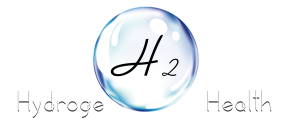When people talk about hydrogen inhalation, they are generally referring to molecular hydrogen (H2).
However, some companies also provide Brown's gas inhalation devices. Sometimes, these terms are used interchangeably, which can be confusing. Nevertheless, they differ significantly in composition, properties, and practical uses. Let's take a look at what Brown's gas therapy is and highlight the key differences between Brown's gas and molecular hydrogen.
What is Brown's Gas? Brown's gas, often referred to as BG, oxyhydrogen, or HHO gas, is a mixture of hydrogen (H2) and oxygen (O2). It has an exact ratio of two hydrogen atoms to one oxygen atom.
This unique gas has attracted attention due to its distinctive properties, especially its safety and potential applications in various fields, including health and wellness. However, when compared to molecular hydrogen, there are some key differences.
Seven Key Differences between Brown's Gas and Molecular Hydrogen:
- Composition
- Brown's Gas: Brown's gas is a unique mixture of hydrogen (H2) and oxygen (O2) gases in a 2:1 ratio, closely resembling the composition of water (H2O). This composition is critical because it replicates the stoichiometric ratio needed for water, which has unique properties.
- Molecular Hydrogen (H2) Gas: Molecular hydrogen consists solely of two hydrogen atoms bonded together (H-H), with no oxygen component. Its simplicity in composition sets it apart from Brown's gas.
- Production
- Brown's Gas: Brown's gas is primarily produced through the process of electrolysis, where water is subjected to electrical currents within a specialized electrolyzer. This process effectively splits water molecules into hydrogen and oxygen gases, resulting in the production of Brown's gas. The equipment and process for producing Brown's gas are distinct from those used for molecular hydrogen.
- Molecular Hydrogen (H2) Gas: Molecular hydrogen can be produced through various methods, including water electrolysis, steam methane reforming, or natural gas reforming. The production methods for molecular hydrogen are well-established in various industries.
- Safety
- Brown's Gas: Brown's gas can be safely used when handled correctly within controlled environments. However, it has a crucial safety concern—it is highly explosive when exposed to open flames or sparks. Therefore, special equipment and safety measures are necessary when working with Brown's gas.
- Molecular Hydrogen (H2) Gas: Molecular hydrogen is generally considered safe for inhalation or consumption when produced and administered within established safety guidelines. It is non-toxic and non-explosive under normal conditions, which enhances its safety profile.
- Application in Health
- Brown's Gas: Brown's gas therapy involves inhaling or consuming the gas mixture as a potential health treatment. It's important to note that Brown's gas therapy is relatively less researched compared to molecular hydrogen therapy in the context of health.
- Molecular Hydrogen (H2) Gas: Molecular hydrogen therapy is often administered through hydrogen-rich water or inhalation of hydrogen gas. It has gained popularity for its potential antioxidant properties (which slow aging processes and improve Alzheimer's symptoms) and its ability to support overall health and well-being. Molecular hydrogen has a more substantial body of scientific research supporting its potential health advantages.
- Potential Applications
- Brown's Gas: Brown's gas has shown potential applications in various industries beyond health, including welding, metal cutting, and water torches. Its unique properties make it valuable in certain industrial processes.
- Molecular Hydrogen (H2) Gas: Molecular hydrogen also has diverse applications, including serving as a clean energy carrier, fuel for fuel cells, and a therapeutic agent in the field of health and wellness. Its versatility has led to widespread research and exploration of its potential benefits in multiple domains.
- Versatility
- Brown's Gas: Brown's gas is primarily known for its industrial applications, and its use in health therapy is a relatively recent development. Its versatility is more limited compared to molecular hydrogen.
- Molecular Hydrogen (H2) Gas: Molecular hydrogen is versatile and finds applications in a wide range of fields, from healthcare to renewable energy, making it a more adaptable and versatile gas. Some research suggests it may offer support in cancer treatment, for example.
- Purity
- Brown's Gas: Brown's gas is produced as a mixture of hydrogen and oxygen in a 2:1 ratio. While it can be purified to reduce oxygen content, achieving high purity levels can be challenging.
- Molecular Hydrogen (H2) Gas: Molecular hydrogen can be produced with a high degree of purity, often exceeding 99.999%, making it suitable for various sensitive applications, including scientific research and electronics manufacturing.
In Conclusion: Brown's gas and molecular hydrogen (H2) gas offer distinct compositions, production methods, safety profiles, health applications, potential uses, versatility, and purity levels. While both hold promise, Brown's gas is relatively less explored, particularly in the field of health, compared to extensively researched molecular hydrogen.

